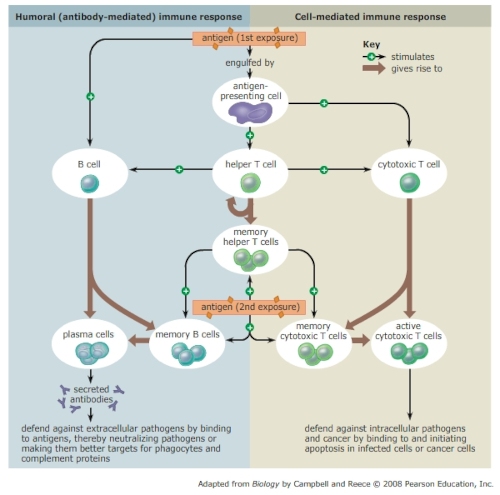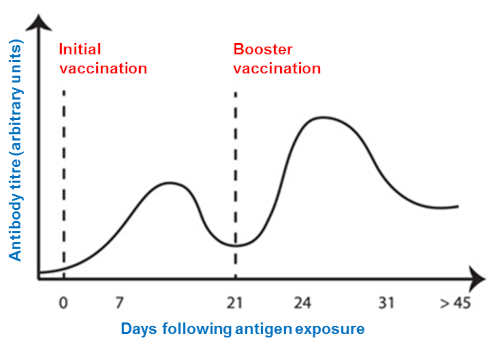Virtual Genetics Education Centre
Vaccines for higher education
The immune system is highly complex, bringing together a multitude of different cells and signals. Below is only a very simple overview of the immune system.
The immune system is responsible for protecting us against infection. It is comprised of two branches; the innate and adaptive immune system.
Innate immunity
Innate immunity refers to the non-specific response our immune system has to foreign agents. The innate immune system is considered our body's first line of defence. The protection offered by the innate immune system has 5 main constituents:
- The removal of foreign agents from body tissues by non-specific white blood cells called macrophages.
- The attraction of cells of the immune system to the site of infection by establishing chemical gradients through the release of inflammatory mediators (cytokines and chemokines).
- Activation of a sequence of reactions aimed at clearing bacteria, infected host cells and debris. This sequence of reactions is known as the complement cascade.
- Acting as a physical barrier against the entry of foreign agents (e.g. skin is a component of the innate immune system).
- Finally, an aim of the innate immune system is to activate the adaptive immune system by presenting it with foreign antigens.
Adaptive immunity
The adaptive immune system is the arm specialised for clearing previously encountered foreign material. The adaptive immune system consists of two main classes of leukocytes (white blood cells) called B-cells and T-cells. B cells are responsible for the secretion of antibodies specific to foreign antigens. T cells are responsible both for activating B cells (T helper cells) and for killing pathogens/pathogen infected host cells (T-killer cells). This branch of the immune system is adaptive, because of several mechanisms it has to mature immune cells making them highly specific to antigens encountered on pathogens and subsequently presented by the innate immune system.

Vaccination
Vaccines have been a revolution in modern medicine, helping to protect millions of people from infectious disease. They work by building up memory immunity to a target pathogen.
Vaccines are biological preparations comprised of dead/attenuated pathogens or antigens from their surfaces. These preparations alone cannot cause disease but can help our body to develop memory immunity, protecting us should we become infected with the live pathogen. The initial, innate immune response is relatively slow and is the reason why we often display symptoms of disease before our immune system has chance to kill the pathogen. Following this we develop adaptive immunity, through the specialisation of leukocytes, fine tuned to react to the encountered pathogen.
Vaccination aims to bypass slow, initial response so that when we are infected with disease causing material, our acquired immunity (from the vaccine) can kill an invading pathogen before they have chance to cause disease.
How effective are vaccines?
Vaccination is one of our most powerful tools against infectious disease and have been very successful at protecting us. One of the greatest successes in modern medicine is the polio vaccine, which after 3 doses offers 99% coverage and has all but eradicated poliomyelitis.
